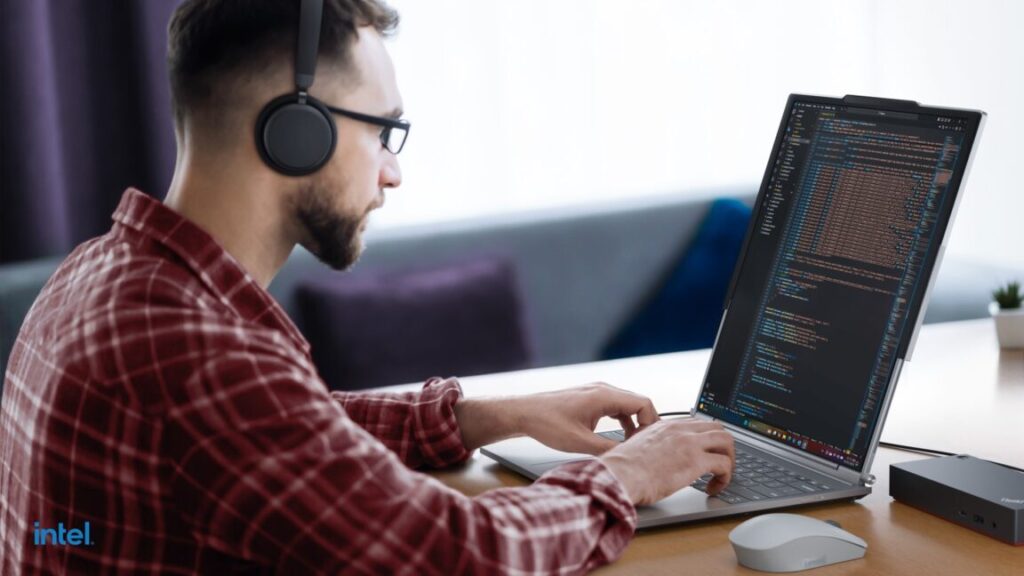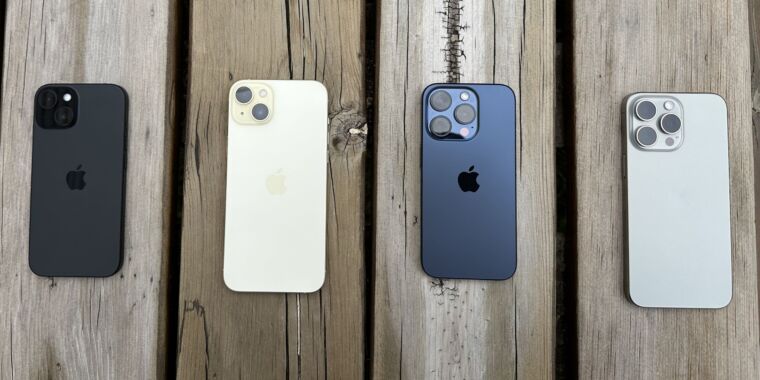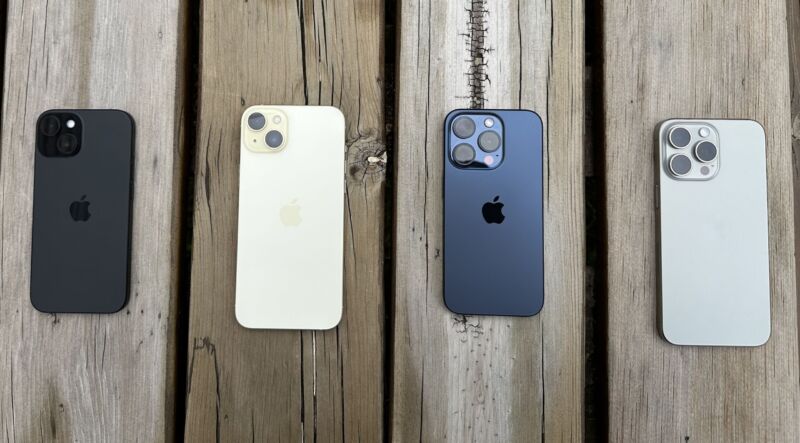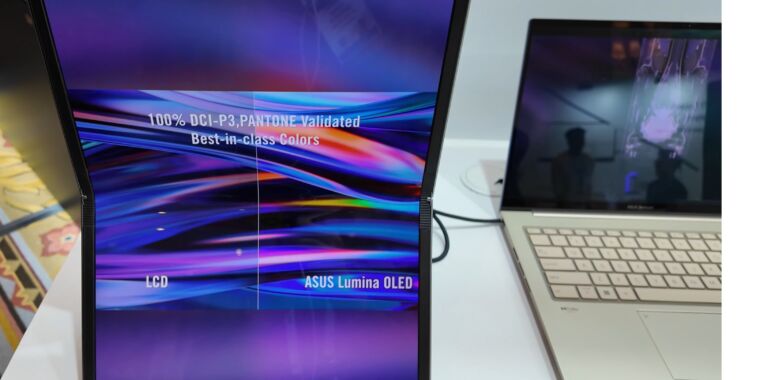Lenovo laptop’s rollable screen uses motors to grow from 14 to 16.7 inches
Lenovo announced a laptop today that experiments with a new way to offer laptop users more screen space than the typical clamshell design. The Lenovo ThinkBook Plus Gen 6 Rollable has a screen that can roll up vertically to expand from 14 inches diagonally to 16.7 inches, presenting an alternative to prior foldable-screen and dual-screen laptops.
Here you can see the PC’s backside when the screen is extended. Lenovo
The laptop, which Lenovo says is coming out in June, builds on a concept that Lenovo demoed in February 2023. That prototype had a Sharp-made panel that initially measured 12.7 inches but could unroll to present a total screen size of 15.3 inches. Lenovo’s final product is working with a bigger display from Samsung Display, The Verge reported. Resolution-wise you’re going from 2,000×1,600 pixels (about 183 pixels per inch) to 2,000×2,350 (184.8 ppi), the publication said.
Users make the screen expand by pressing a dedicated button on the keyboard or by making a hand gesture at the PC’s webcam. Expansion entails about 10 seconds of loud whirring from the laptop’s motors. Lenovo executives told The Verge that the laptop was rated for at least 20,000 rolls up and down and 30,000 hinge openings and closings.
The system can also treat the expanded screens as two different 16:9 displays.

The screen claims up to 400 nits brightness and 100 percent DCI-P3 coverage. Credit: Lenovo
This is a clever way to offer a dual-screen experience without the flaws inherent to current dual-screen laptops, including distracting hinges and designs with questionable durability. However, 16.7 inches is a bit small for two displays. The dual-screen Lenovo Yoga Book 9i, for comparison, previously had two 13.3-inch displays for a total of 26.6 inches, and this year’s model has two 14-inch screens. Still, the ThinkBook, when its screen is fully expanded, is the rare laptop to offer a screen that’s taller than it is wide.
Still foldable OLED
At first, you might think that since the screen is described as “rollable” it may not have the same visible creases that have tormented foldable-screen devices since their inception. But the screen, reportedly from Samsung Display, still shows “little curls visible in the display, which are more obvious when it’s moving and there’s something darker onscreen,” as well as “plenty of smaller creases along its lower half” that aren’t too noticeable when using the laptop but that are clear when looking at the screen closely or when staring at it “from steeper angles,” The Verge reported.
Lenovo laptop’s rollable screen uses motors to grow from 14 to 16.7 inches Read More »





